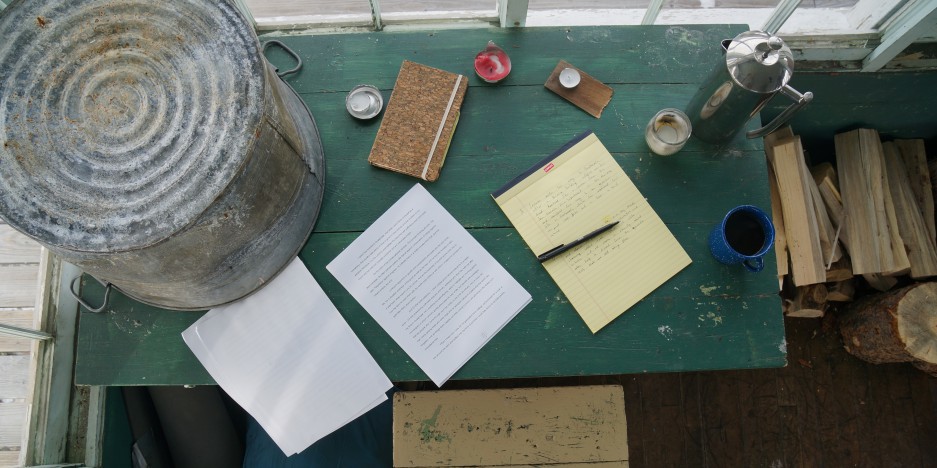This is Part 2 of a series. Be sure to check out Part 1!
“Who do you think is the enemy?” our family friend, Fabian*, asked me around a camp fire a few years ago. I think it was 2006, a year before President Bush would declare victory in Iraq, and while military operations in Afghanistan were beginning to crescendo. Fabian spent his career in the State Department, and at the time was stationed in the embassy in Kabul. “Pakistan,” I answered. The porous border between the countries and refuge for Taliban fighters didn’t seem in the spirit of international cooperation to me.
“Nah,” he said, and adjusted his seat by the fire. “It’s the Department of Defense.”
The ramifications of that are huge, especially in this conversation we’re having about the role that public fear plays in American foreign policy, and it really comes down to money. DoD funding increases with our level of crisis. It doubled in the year after the 9/11 attacks, and it follows that the subset of the government that derives its funding from our being at a state of war has very little incentive to end that state of war.
Little incentive, of course, except that at some point the public will tire of it and replace the government. But the very private sector, the profit driven military industrial complex? That’s a $250 Billion per year industry that’s going to do just fine regardless of who’s in office, and you can bet they’ve got a marketing budget. Today CNN, Fox, and MSNBC find themselves scrambling to fill a 24 hour daily stream of breaking news, and nothing sells better than adding the word “terror” to a headline. We’re looking at a national economy of fear, where the demand of the United States military is met with the supply from news media who benefit from more and more sensational headlines.
It’s working. Fear in the emotional landscape of Americans is disjointed from the reality of the risks. Gallup reports that over the last ten years Americans have grown increasingly afraid of walking home alone at night, in spite of a precipitous two decade drop in violent crime. Fear of terror attacks wildly outweigh their probability, to a level that rests somewhere between a phobia and bona fide paranoia.
The actual terrorist threat to you, right now, is basically 0. And yet there is a mammoth effort to convince you of your imminent doom at the hands of a knife wielding jihadi.
Now, at this point I realize that I’m probably starting to come off a little bit like a paranoid conspiracy blogger, and you might guess that the next several paragraphs will increase in fervor until I’m typing in call caps and submitting FOIA requests for the real 9/11 Commission Report. So I decided to scrape together some credibility and reached out to Dr. Louis Hayes, professor of Politics and International Relations at the University of Montana. He’s spent significant time in Pakistan, Afghanistan, and other current conflict areas, and spent much of his career thinking about Civil Violence. He literally wrote the definition of the word “terrorism.”
“The terrorist threat is a fraction of what it is portrayed to be by those who derive an income from the phenomenon,” he told me, and hinted that the fear campaign is as effective as it is today because of the immediacy of news delivery. “Hundreds of years ago people would have read about [an attack] in the newspaper” if at all, he said. But now video footage of bombs detonating in Boston can be shown on repeat for days on end. We’ve all seen video of the plane striking Tower 2 hundreds of times.
The reality of the risk of terror attacks is better illustrated by how infrequently it actually happens. “Terrorist opportunities are everywhere” Hayes explained. “I used to play golf where there was a gasoline pipeline crossing a river with only a chain link fence protecting it. I could have thrown a homemade bomb and made a statement.” We’re a nation of low hanging fruit, and yet . . . crickets.
The relationship between a television news media that survives on sensational news breaks and a defense industry that relies on a relatively high baseline of generalized anxiety is increasingly murky. “9/11 was a turning point,” says Hayes. “Before then there were maybe half a dozen specialists in civil violence. Now every news agency has its own civil violence division.” The reality is that your being afraid is good for business. Whether it’s for CNN chasing unique views and click-throughs, or allowing the NSA to maintain a surveillance state that would make Aldous Huxley blush, there is a significant investment in inflating your fear.
Your fear of what? Terrorism is fine for now, but it doesn’t really matter.
After World War II we had the Soviets. We were afraid the Cubans and the North Vietnamese. We had a domestic communist threat and wild theories about Latin American countries falling to Soviet influence like dominoes. After the wall came down there was lingering turmoil in the western hemisphere and a new power vaccuum in eastern Europe, and over the last three decades the ax hovering above our heads has shifted from a communist threat to that of Islamic militants.
The actual risk to your safety is basically nil. The most dangerous thing you can do is not exercise, but that fact doesn’t boost cable news ratings or elect Lindsey Graham. There are trillions of dollars invested in our nation’s persistent economy of war, and drama and fear speak much more loudly than statistics.
*As long as we’re making up names, why not?
Let's Talk About Fear (Part 1 of 4)
This is Part 1 of a series. Be sure to check out Part 2! Last week, Ahmed Mohamed became a household name when he brought ... Read more
You Do You (Part 3 of 4)
This is Part 3 of a series. Be sure to check out Part 1 and Part 2! My parents are both artists, and have always considered ... Read more


4 thoughts on “There’s a Terrorist Behind Your Shower Curtain (Part 2 of 4)”